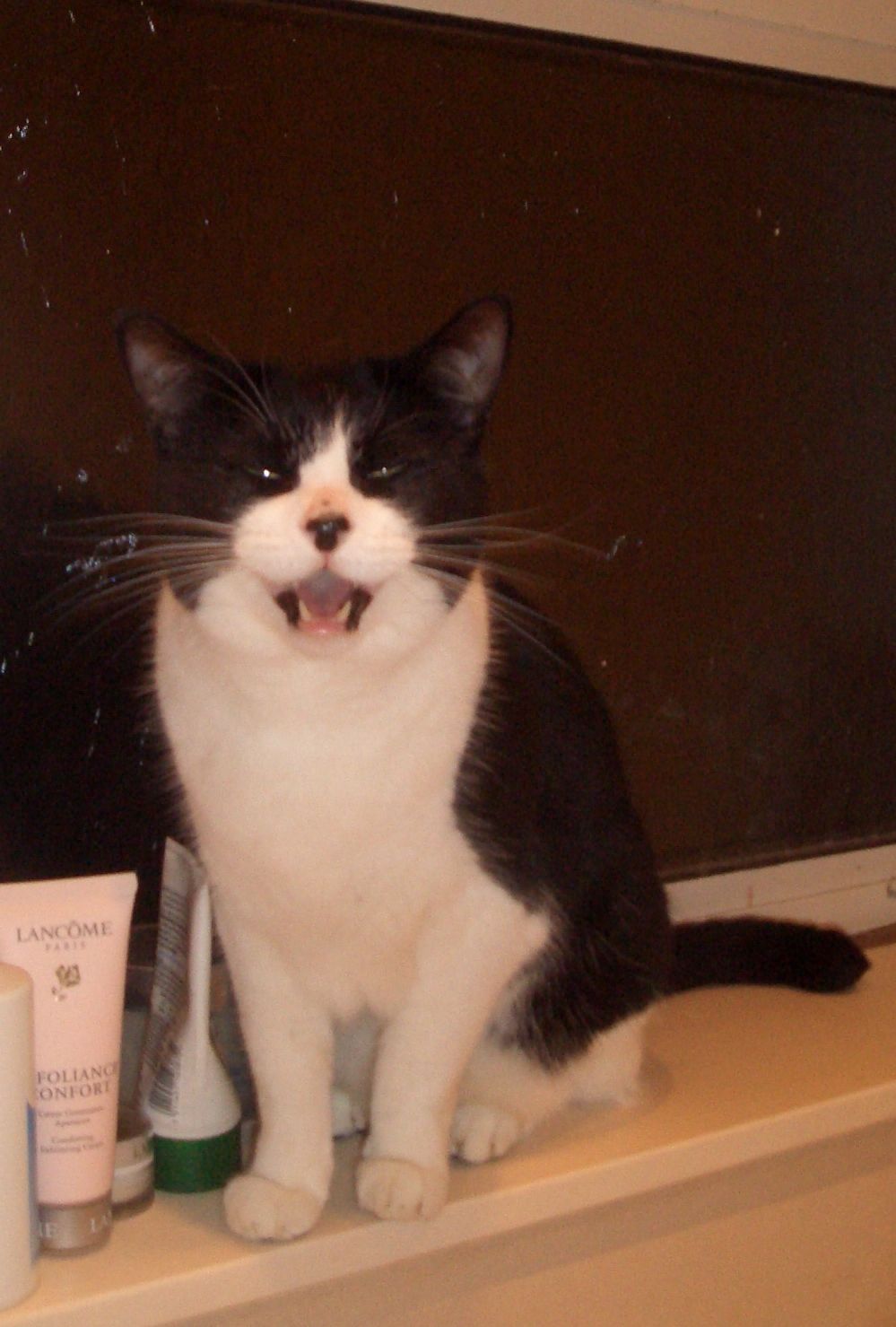
Like humans, your cat can develop dental problems such as tartar, gingivitis and plaque build-up. Oral disease starts with a build up of plaque and tartar on your cat’s teeth.
Your cat should have a regular dental check up. You should regularly take your cat to your vet for a health check up, where the vet will also check your cat’s teeth and general dental and mouth health.
Dental disease is the most common disease found in pets, however it can be prevented with greater dental care and attention. Dental disease can lead to more serious build-up of bacteria in the mouth which can worsen to severe periodontal issues and health issues such as heart and kidney problems. Dental disease can also be linked to other health problems in your pet such as immune system disorders, so it’s really important to maintain your pet’s dental health.
Because of dental disease and poor oral health and decay, a cat’s gums will become painful, swollen and tender which may cause bleeding.
Brushing your cat’s teeth
You can brush your cat’s teeth regularly to maintain good oral hygiene and health. Try and brush the teeth once daily for 1-2 minutes each time. Use a small toothbrush and pet-only toothpaste, do not use human toothpaste as this is not suitable for animals. Special pet toothpastes come in a variety of pet-friendly tastes such as fish, malt or chicken. You can also get a toothpaste from your vet that can be rubbed onto the gums and teeth if your cat is adverse to their teeth being brushed and a toothbrush being stuck into their mouth!
Chews and biscuit food
Specific oral care dental chews can be purchased from your vet and in all good pet shops. Dental chews come in all sorts of shapes and sizes. Kibble size with the shape, taste and texture will encourage your cat to chew thoroughly which in turn has a teeth brushing effect that reduces dental plaque and tartar forming on the teeth surface. These chews also contain a harmless, active dental calcium agent that will help to limit dental plaque forming. Chew sticks and various other chews are available, so ask your vet for a recommendation.
You can also leave a bowl of dry cat food out for your cat with wet food, as the crunching on the biscuits can aid ongoing, daily dental maintenance, however it will not cure an unhealthy oral condition. We always give our cats both dry and wet food as they love to crunch the dry biscuit food.
Kittens’ dental health
You should not brush your kitten’s milk teeth, however you can start getting them used to dental hygiene at a young age by touching their teeth and mouth area. But mind their sharp little teeth with your fingers as they may think you are playing a game!
Getting your cat used to teeth brushing
Your cat may not like having its teeth brushed, that is certainly the case with two of our cats who are a bit older!
To get your cat used to being handled by the mouth, you can start by giving the pet flavoured toothpaste to your cat to lick off your finger.
Get a small, baby sized toothbrush to start with or a special cat toothbrush, ask your vet for advice. If you have more than one cat, use one toothbrush per cat, avoid using the same brush as you can transmit bacteria and germs from one cat to another.
Hold your cat gently so that their back is towards you and you are not facing each other as this is less confrontational and controlling to your cat. Very slowly and gently, pull back your cat’s lips and start by touching their teeth with the toothbrush initially (no brushing), then stop and reward your cat with a treat and encouraging words. Repeat this daily for several days and when they feel comfortable and used to this routine then start to gently brush their teeth.
If your cat is not happy with having their mouth interfered with, you will need to be patient and continue reassuring and soothing your cat by touching its mouth and head until it feels more comfortable. This may take a few more days but it will be worth it.
When your cat is ready, apply the bristles of the brush to the teeth at a 45-degree angle so that you are brushing the surface of the tooth and just beneath the gumline, however do not brush the gums. Continue with this for around 10-15 seconds, stop and reward them, then gently continue again.
Try to keep a regular routine with brushing your cat’s teeth, so every morning at the same time after they have eaten, or every evening after they have eaten, but make it a time when both you and your cat are calm and relaxed. It’s also important that you are not rushing the dental care and brushing as this may stress your cat out. So choose a regular time in the day or evening when you have the time and patience to do it.
Signs of dental disease
Symptoms of dental disease that your cat may show include:
- Bad breath
- Swollen, red and painful gums
- Changes in eating and chewing habits
- Depression
- Excessive drooling
- Discoloured, broken or crooked teeth
- Red, swollen or bleeding gums
- Yellow or brown tartar and plaque crust along the gum line
- Pawing at the mouth or face
- Growths or bumps in the mouth
If you think that your cat is suffering from dental problems then take them to your vet immediately for a check up.
